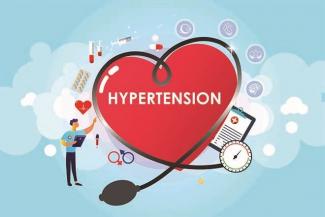
While exercise is one of the best ways to manage hypertension, there are are some precautions you must take while exercising if you have High Blood Pressure.
Exercise is the best way to lower blood pressure and is highly recommended by doctors for people with Hypertension (high blood pressure). Exercises help the heart pump blood more efficiently thereby decreasing the strain on the arteries and lowering the blood pressure. Exercising also aids in increasing energy levels and overall stamina, providing a feel-good sense, lifting mood and reducing stress.
| The American Heart Association recommends that you get at least 150 minutes of moderate-intensity or 75 minutes of high-intensity exercises or a combination of both spread through the week. www.heart.org |
What you must do
Consult your doctor before deciding to commence any physical activity routine.
It is natural to be worried that sudden physical activity may in fact cause your BP to rise for a short time. Most people are able to safely get into an exercise routine. Remember, that BP will return to normal soon enough after your exercises/activity has ended. If your BP is normally above 200/110, speak to your doctor before starting any exercise routine. Your doctor may want to lower your BP with medicines first.
If you are not currently active or haven’t exercised in a long time, start off with 30-35 minutes a day, 4-5 times a week. Increase your time slowly over the next few months.
Opt for aerobic or cardio activities that will help increase your lung capacity and heart strength. Such exercises can include brisk walking, swimming, aqua aerobics, bicycling (regular or stationary), jogging, playing outdoor sports etc.
With any form of exercise or activity, always begin with low intensity and build up gradually!
Do a combination of both upper and lower body exercises to maximize blood circulation to most parts of the body.
Stretching is a great way to warm-up and improves flexibility and movement. It also provides relief from stiff muscles and helps prevent any injuries. Popular stretching and fitness workouts include Pilates, Yoga, and Tai chi.
Always cool down after any activity. Slow down, take a few deep breaths and rest for a few minutes.
If you experience any shortness of breath, chest tightness or pain, dizziness or extreme fatigue, stop exercising at once and seek medical attention immediately.
What you should not do:
Don’t exercise first thing in the morning if:
- You have a history of Coronary artery disease, heart attack, stent or bypass surgery. Studies show an increased risk of coronary events and sudden death when exercising right away after waking.
- If you take your anti-hypertensive or any heart medications in the morning, leave a gap of a few hours before embarking on any exercises. Exercising before taking your medication can increase risk of unwanted heart changes. Most BP medicines are taken once-a-day and their effect lasts for 24 hours; the effect weaning off towards the end of the 24 hour cycle.
Yoga asanas which require the head downwards below heart level can also affect your BP and make you feel dizzy or faint. Avoid such positions.
Do not lie down in a supine position (on your back) for a long time as blood may pool up in one area. This is especially important for the older people who may then stand up and feel light-headed from sudden change in position.
Tip: Turn on your side before you get up.
Don’t jump into heavy weights training right away, instead start with lighter weights and do multiple repetitions. Lifting heavy weights requires more body strength and can strain the heart, leading to a rise in blood pressure. Weight training should be started under guidance of a Gym trainer.
Avoid long intervals (days or weeks) with no exercise. If you are busy, try to take out 10 minutes a day for some form of exercise. Suddenly resuming your exercise regime after a gap may be risky to your health and cause musculoskeletal injuries.






